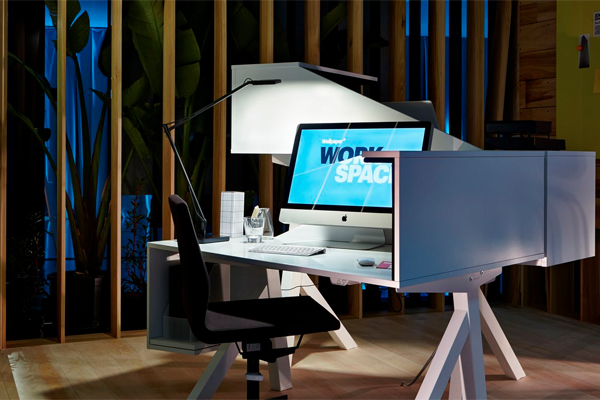We look back at last month’s Archifest Forum and select some key points from the panel discussion.

November 15th, 2012
This year’s Archifest forum occurred on 17 October at SOTA, and served to dissect and discuss the overarching Archifest 2012 theme of ’Rethink Singapore’. The speakers were Winy Maas (MVRDV), Steven Fleming (University of Tasmania), Erieta Attali (Columbia University), Andres Sevtsuk (Singapore Universty of Technology and Design and City Form Lab), Leonard Ng (Atelier Dreseitl), Khoo Peng Beng (ARC Studio), Goh Sze Ying (Popdigital), and Tai Lee Siang (Ong&Ong). Kelley Cheng (The Press Room) moderated the proceedings.

Kelley Cheng on change and community:
“Right now, Singapore is going through massive change. For most of us who have lived luxuriously in a country that used to have 2.58 million people, today’s 5.8 million means a lot of change in a very short time. As [Singapore Institute of Architects President] Theodore [Chan] mentioned in a recent interview, since last year’s election there’s been this rise of the community in order for people to cope. And with social media, Singaporeans are more vocal these days.
“Creativity thrives on freedom – of thought, speech and action. With social media, I think Singaporeans are starting to find creativity because we finally have a platform on which to speak up.”

Andres Sevtsuk on rapid change:
“The degree to which people are happy with change largely depends on the rate of change – how quickly change happens. Over and over again in other countries we see that if change is very rapid, it’s hard to get used to.”

Khoo Peng Beng on boundaries:
“The thing about rules is that once you start to make them, you can’t stop. Now our handrails are being governed. But if someone wants to jump, they’ll jump right? You have to learn that if you’re not careful, you’ll fall. We need to find a kind of balance between setting very tight boundaries and having no room to manoeuvre, versus having developmentally oriented boundaries. What kind of boundaries do we need?”

Tai Lee Siang on green density:
“What we hear people complaining about with regard to ’6 million people’ sometimes has nothing to do with hardware. A lot of it is emotional and to do with social distance, and Singaporeans not knowing how to cope with foreigners living under the same roof. Lets put all those things aside, and ask ourselves as architects and planners: assuming all people are nice to each other, can we decently house 6 million people within 700sqkm?
“Looking at Peng Beng’s model, and looking at what we have today, I think we can. My argument against it has to do with our adaptation to high-density living. We have now begun to accept that we can live in shoebox apartments. But is that humane? And if not, what should really be done? What is the right proportion of green space versus the dwelling space that a human being should rightfully deserve to have?
“I suspect we still fall short. We don’t just need to pump in people; we need to pump in the green as well. And when we achieve that, I think we’ll be a shining model. That’s something I’m dying to see!”

Erieta Attali on visualising the city:
“Let’s say the URA invited photographers from different parts of the world – places where people are completely disconnected from the concept of what is an Asian city is like – and let them photograph different parts of Singapore. Then exhibit the results and let Singaporeans see what their city looks like from the foreigner’s point of view. It would be interesting to see.”

Andres Sevtsuk on building for diversity:
“An area that I’m very interested in thinking about in Singapore is the role of building typologies. There are building types that can accommodate – better or worse – diversity in them. Historically there are lots of great examples – the Haussman type in Paris, or the row house in London, or the Dutch row house. In Singapore, we’ve had the shophouse.
“There are currently some interesting types of blocks being built that have very high density upstairs while still forming streets. That could be one area of research that’s helpful – to think very seriously about building types. How can we implement building types that lend themselves more readily to accommodating diverse uses? And even if those uses are not there right now, the buildings are ready to be adapted at some point in time.”

Archifest 2012
archifest.sg
A searchable and comprehensive guide for specifying leading products and their suppliers
Keep up to date with the latest and greatest from our industry BFF's!

Channelling the enchanting ambience of the Caffè Greco in Rome, Budapest’s historic Gerbeaud, and Grossi Florentino in Melbourne, Ross Didier’s new collection evokes the designer’s affinity for café experience, while delivering refined seating for contemporary hospitality interiors.

Savage Design’s approach to understanding the relationship between design concepts and user experience, particularly with metalwork, transcends traditional boundaries, blending timeless craftsmanship with digital innovation to create enduring elegance in objects, furnishings, and door furniture.

Marylou Cafaro’s first trendjournal sparked a powerful, decades-long movement in joinery designs and finishes which eventually saw Australian design develop its independence and characteristic style. Now, polytec offers all-new insights into the future of Australian design.

Adam Khan’s work gave attendees at the Wallpaper* Handmade Exhibition last week in Milan the opportunity to muse on where we might spend our working lives in future

American Hardwoods are known for their unmatched beauty, diversity of species and sustainability. Here we take a look at some of the most significant projects that have paved the way for the ongoing success of American hardwoods in Australian design.
The internet never sleeps! Here's the stuff you might have missed

DKO’s Interior Design Director on how to create community and specificity in interior design, and how apartment living is being reconceptualised.

Create a configuration to suit your needs with this curved collection.